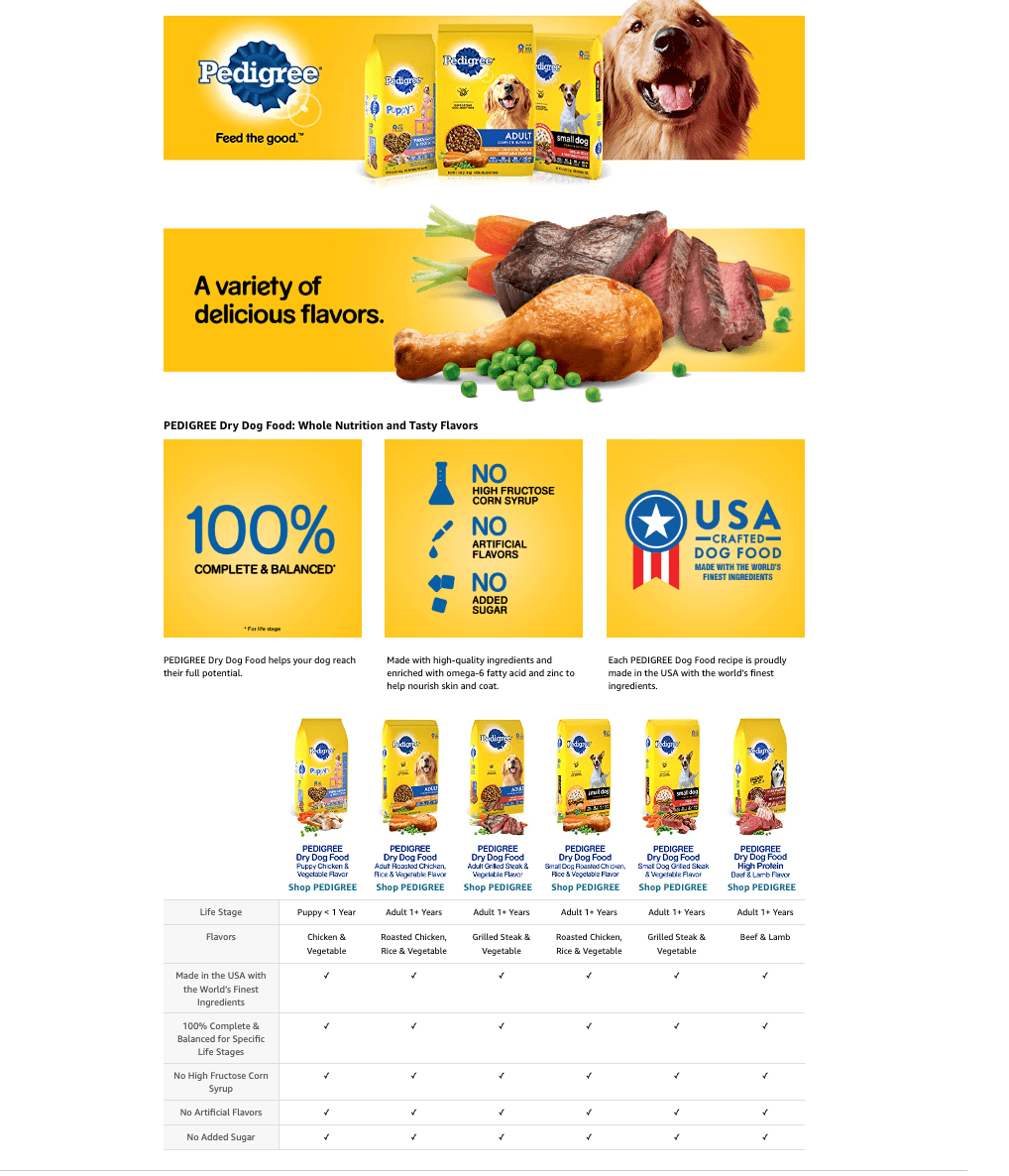intelliRANK Blog
From Click to Cart: How Better Listings Make Your PPC Ads More Profitable
Get the FREE 4-step Strategy Plan eBook
that will help you Increase your Amazon Sales immediately...
Running PPC campaigns on Amazon is one of the fastest ways to get eyes on your product.
But here’s the catch: clicks alone don’t pay the bills.
You can drive all the traffic in the world, but if shoppers land on a weak listing, most of those clicks will bounce. That means wasted ad spend, rising ACoS, and the sinking feeling that your marketing budget is going down the drain.
The solution? Optimized listings that convert clicks into carts.
In this guide, we’ll dive into how better listings make your PPC campaigns more profitable, why keyword alignment is the missing link between ads and conversions, and how a combined strategy of product listing optimization and PPC management can transform your Amazon business.
Why PPC Without Listing Optimization is Like Pouring Water Into a Leaky Bucket
Imagine paying for 1,000 shoppers to click on your ad.
If your listing is unclear, poorly written, or missing the right benefits, maybe only 10 of them buy. That’s a conversion rate of 1%.

Now imagine the same 1,000 shoppers clicking through, but this time your listing is polished, persuasive, and laser-targeted to their search intent. Suddenly, 50 of them buy. Your conversion rate jumps to 5%.
The ad spend is the same. The difference is the listing.
This is why optimizing your product listing isn’t optional — it’s the foundation that determines whether your PPC campaigns deliver profit or just drain your budget.
The 3 Core Roles of an Amazon Listing Promoted Through PPC
1. Relevance for Amazon’s Algorithm
Amazon uses your title, bullet points, backend keywords, and description to decide which search terms your product is relevant for. If your listing isn’t optimized, your ads may struggle to win impressions — or worse, win irrelevant ones.
2. Conversion for the Customer
Once shoppers land on your listing, every word, image, and review either pulls them toward the “Add to Cart” button or pushes them away. High-converting listings lower your ACoS because more of your clicks become sales.
3. Keyword Alignment
The keywords you target in PPC must also appear naturally in your listing. Without that alignment, Amazon may lower your ad relevancy score, reducing visibility and increasing CPCs.
Breaking Down a High-Converting Amazon Listing
To understand how listings impact PPC performance, let’s look at the key components:
1. Title
Must include primary keywords.
Should also be appealing and benefit-driven.
Example: Instead of “16oz Stainless Steel Water Bottle BPA-Free,” write “Insulated Stainless Steel Water Bottle – 16oz, BPA-Free, Leakproof Travel Mug Keeps Drinks Hot & Cold.”
2. Bullet Points
Highlight benefits, not just specs.
Address objections (leakproof, easy to clean, lightweight).
Use secondary keywords naturally.
3. Images & Video
High-resolution product shots.
Lifestyle photos showing real use.
Short videos demonstrating features and benefits.
4. A+ Content

Comparison charts with your other products.
Visual storytelling that builds brand trust.
FAQ sections addressing buyer concerns.
5. Backend Keywords
Fill every available field.
Include synonyms, misspellings, and niche-specific terms.
Each of these elements strengthens both your organic ranking and your PPC performance.
The Keyword Connection: Why Alignment Matters
One of the biggest mistakes sellers make is separating listing optimization and PPC campaigns as if they’re two different worlds.
In reality, they’re two halves of the same system.
If your PPC ads target keywords that aren’t in your listing, Amazon sees a disconnect. Your ad relevancy score drops, CPCs rise, and impressions may fall.
If your listing includes keywords that aren’t supported by PPC, you miss opportunities. Your organic visibility stalls because there’s no sales velocity behind those terms.
The best strategy is to build a keyword universe: a master list of relevant, high-intent keywords that are integrated into both your listing and your ad campaigns.
This creates a reinforcing loop:
✅ Ads drive traffic.
✅ Traffic drives sales.
✅ Sales drive organic ranking.
How Better Listings Lower TACoS
TACoS (Total Advertising Cost of Sale) is one of the most important metrics for Amazon profitability. It measures ad spend as a percentage of total sales (organic + PPC).
Poor listings = high TACoS. You rely heavily on ads because your listing doesn’t convert or rank organically.
Optimized listings = lower TACoS. Ads perform better, conversion rates rise, and organic sales grow, reducing dependence on ads.
In short, better listings make every advertising dollar work harder.
Why Listing and PPC Should Work Together To Boost Profits
Many sellers hire separate services for listing optimization and PPC management. But when the two don’t collaborate, gaps appear:
PPC campaigns target keywords missing from the listing.
Listings highlight features that aren’t promoted in ads.
Data from PPC (which keywords convert) isn’t fed back into the listing.
A combined service solves this. When the same team handles both listing optimization and PPC:
Keyword data flows both ways.
Campaigns are built on top of optimized, compliant listings.
Adjustments happen faster, saving wasted spend.
That’s why smart sellers now look for partners who can handle both — because in 2025, the two are inseparable.
5 Practical Steps to Align Listings and PPC for Maximum Profitability
1. Start with Keyword Research
Build one master keyword list that includes short-tail, long-tail, and competitor terms. This list fuels both your titles/bullets and your PPC targeting.
2. Optimize the Listing First
Make sure your listing contains all high-priority keywords, is compliant with Amazon rules, and speaks directly to buyer needs.
3. Build PPC Campaigns on Top of the Listing
Use exact match campaigns for your primary terms, phrase match for secondary, and broad match for discovery. Ensure all keywords appear naturally in the listing.
4. Analyze PPC Data and Refine Listings
Look at your Search Term Reports weekly. If new converting terms appear, integrate them into your listing. This boosts both paid and organic performance.
5. Iterate Continuously
Amazon is dynamic. Keywords rise and fall, competitors adjust pricing, and buyer language evolves. Keep listings and ads in sync.
Focus On The Bigger Picture: Building a Profitable Amazon Flywheel
When listings and PPC are aligned, you create a flywheel effect:
Optimized listing ranks for relevant keywords.
PPC drives targeted traffic to the listing.
High conversions improve organic ranking.
Better organic ranking reduces dependence on ads.
Lower TACoS frees up budget to reinvest in more products.
This isn’t just about fixing a listing or running ads. Focusing on the bigger picture can build a long-term growth engine for your brand.
Conclusion
Clicks are very easy, but not all of them will build conversions.
If you want your PPC spend to actually pay off, you need listings that close the deal. That means:
Compliant, keyword-rich titles.
Benefit-driven bullet points.
Persuasive images and A+ content.
Continuous alignment with PPC keywords and campaign data.
When done right, better listings don’t just improve your conversion rates — they make your ads more profitable, your TACoS lower, and your brand stronger.
And if you’d rather not juggle all the moving parts yourself, partnering with a team that specializes in both product listing optimization and PPC management can save you time and deliver better results.
That’s exactly what we do best.
Our team specializes in both listing optimization and PPC management, so you can focus on running your business while we focus on scaling it.
If you’re ready to turn your Amazon presence into consistent growth, book a free 1-on-1 call with us.
© Copyright 2025 - intelliRANK.info - All rights reserved. Terms of Service. Cookie Declaration.










